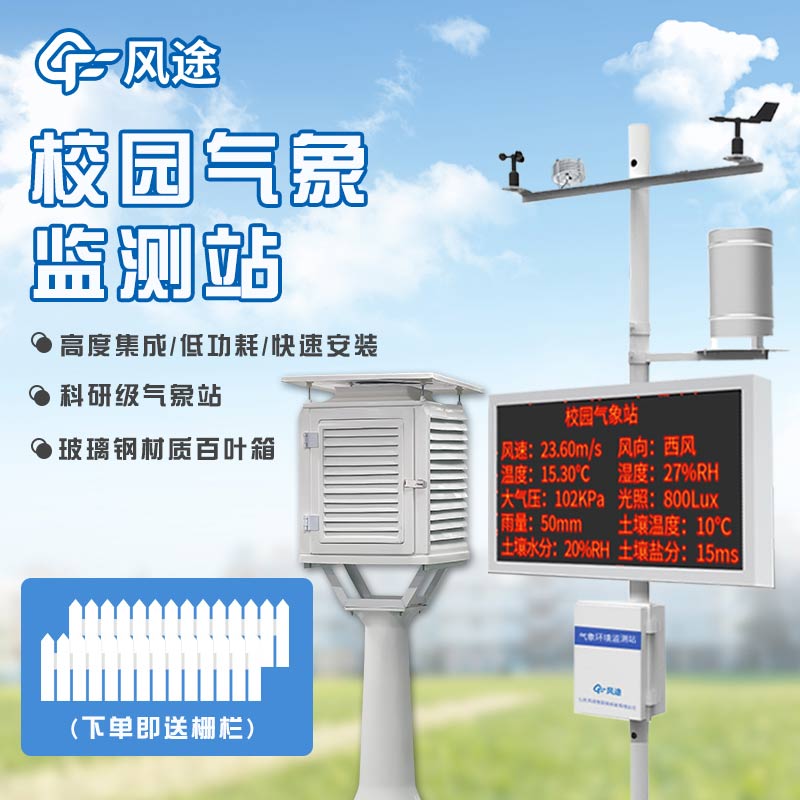Meteorological environment monitoring equipment supplier
Insist on doing high-precision customer favorite technology products
Primary and secondary school campus popularization weather stations usually include basic meteorological observation equipment such as thermometers, hygrometers, anemometers, precipitation meters, etc., and are also equipped with automatic weather stations that can monitor real-time temperature, humidity, wind direction, wind speed, rainfall and other meteorological data, so as to provide more accurate data support for the popularization of meteorological science and education.
Campus weather station is not only a comprehensive service platform for scientific research, but also a media for character education. On the one hand, the physical observation experimental instruments included in the campus weather station can provide students with a comprehensive service platform for practicing social practice activities and professional knowledge of meteorological science; on the other hand, the scientific interactive exchange of thematic activities carried out by the school together with meteorological experts and professors can provide a lot of guidance on the professional ability of the young people with a personal hobby in earth science, so that the campus weather station becomes a useful media for cultivating the students' scientific research methodology and scientific literacy. This makes the campus weather station a useful medium for developing students' scientific research methods and scientific literacy.
In the campus weather station, students can not only extend their professional knowledge of meteorology taught in the teaching classroom through social and practical activities, but also come into contact with contemporary science and technology across the meteorological curriculum, such as sensor technology, modern communication technology, and the application of electronic information technology.
